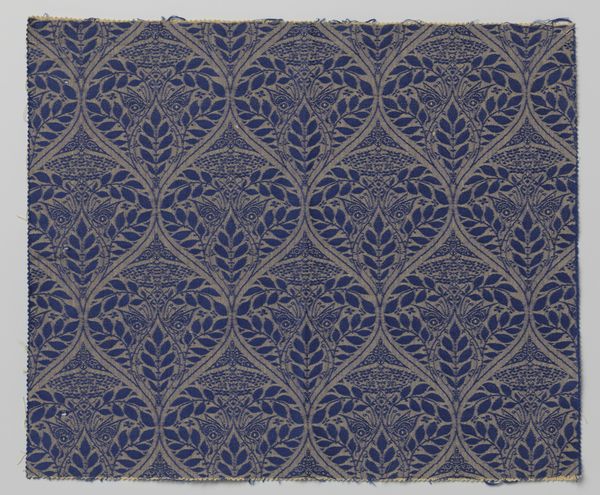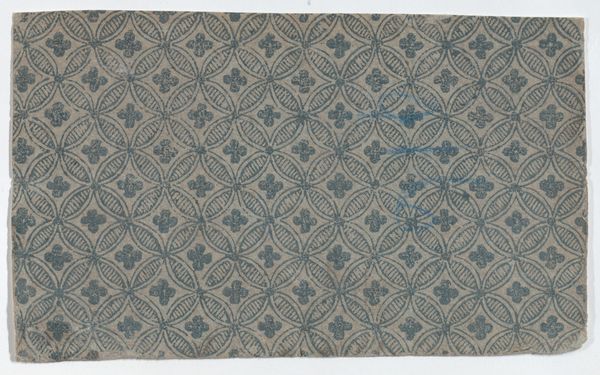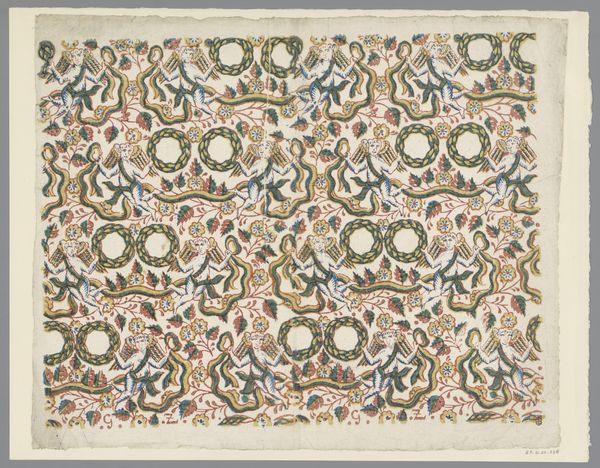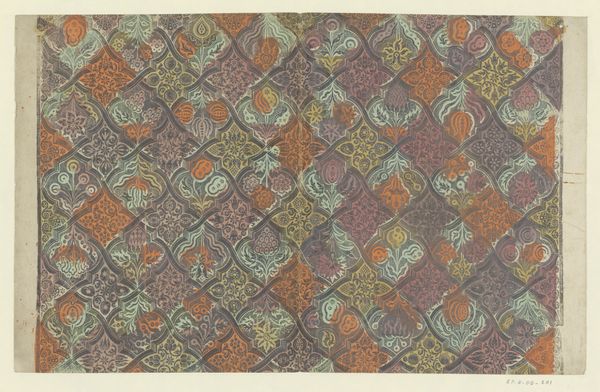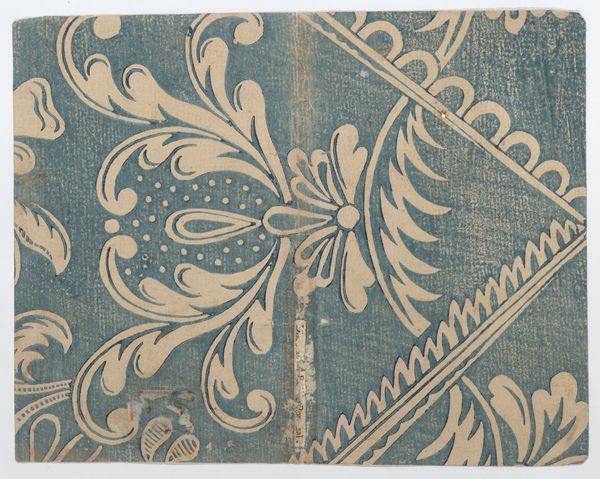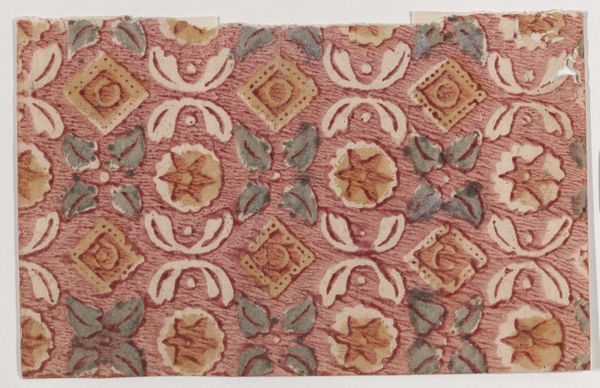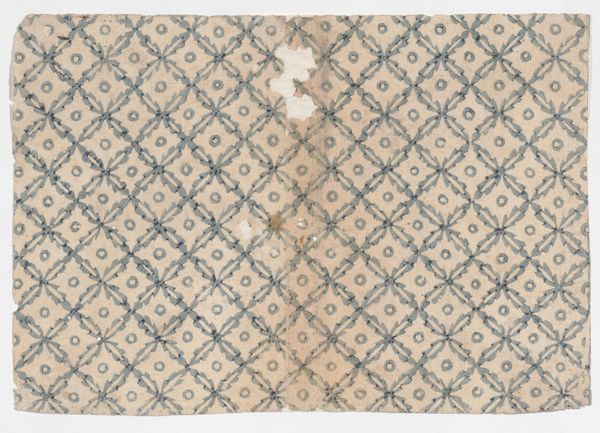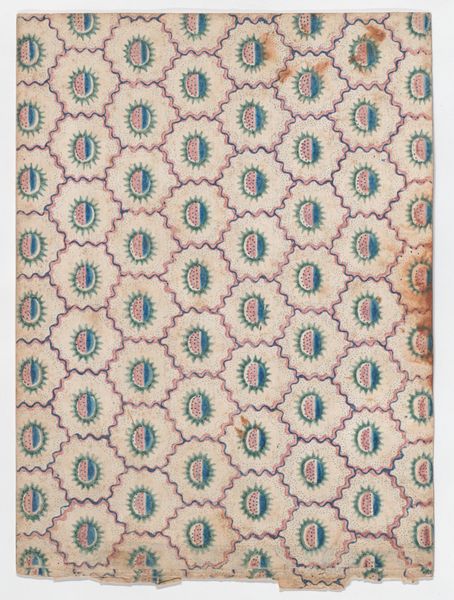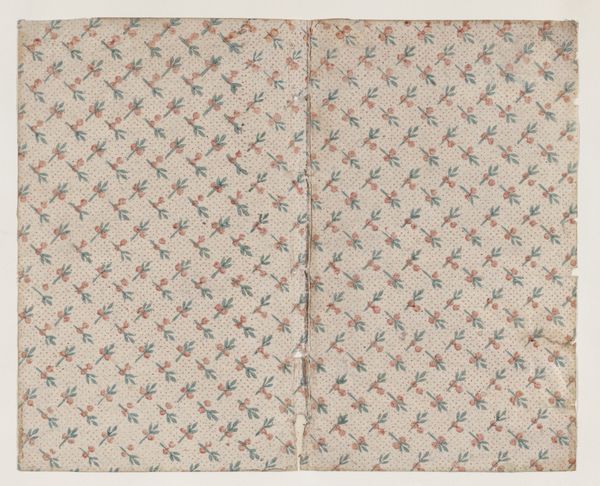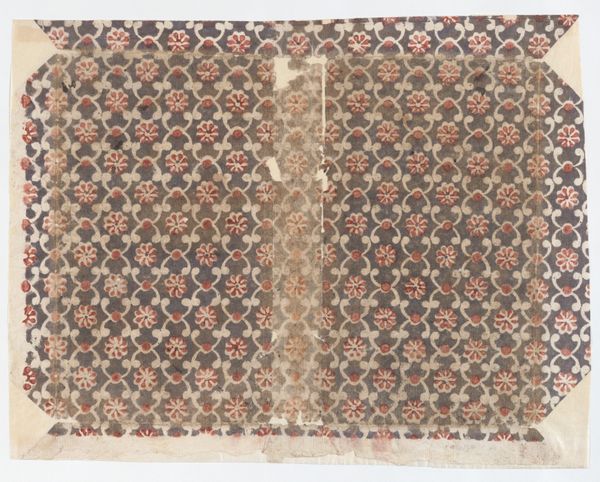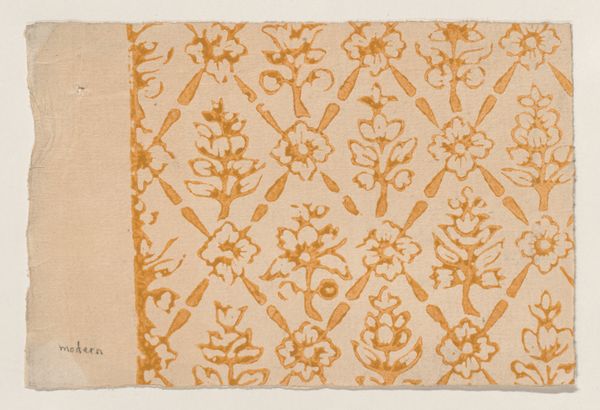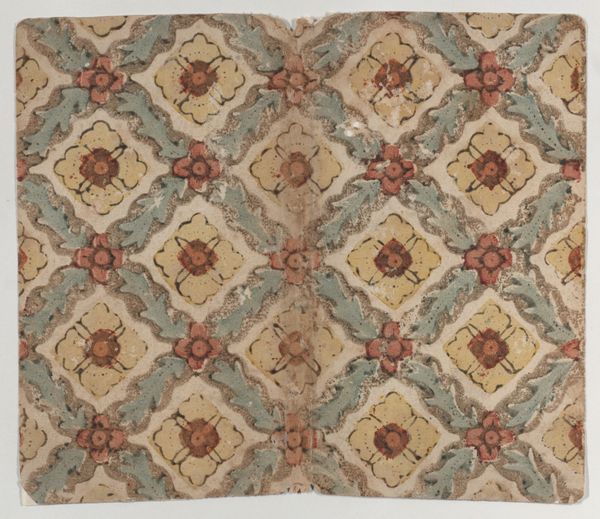
Book cover with overall black and blue leaf pattern 1800 - 1900
0:00
0:00
drawing, print
#
drawing
#
organic
# print
#
geometric pattern
#
organic pattern
#
geometric
#
pattern repetition
#
decorative-art
Dimensions: Sheet: 6 7/8 × 9 3/4 in. (17.4 × 24.7 cm)
Copyright: Public Domain
Curator: Here we have an intriguing book cover. It dates roughly from 1800 to 1900, author unknown. The piece, currently residing here at the Metropolitan Museum of Art, employs both drawing and print techniques to achieve its striking design. Editor: It’s calming, almost meditative. The way the repeated pattern almost…breathes. Like the forest floor viewed through dappled sunlight, with these small leaves neatly spaced. Curator: I think that "breathing" feeling arises from the clever juxtaposition of geometric structure and organic motifs. You have the formal repetition of semi-circular shapes combined with the stylized leaf pattern within. The overall effect softens the inherent rigidity of geometry, making it, as you say, quite soothing. Editor: The leaves feel almost like…stylized ferns? Their simple but distinctive outline makes them modern, while the colours lend them a curious antiquity. I'm not sure whether it’s intentional but there's definitely a balancing act between old and new in this decorative design. Curator: Indeed, there's a fascinating interplay. What looks, from our vantage point, timeless and familiar, existed in a different context for its original audiences. During this time period the Industrial Revolution deeply changed art, its forms, and functions as artists considered how to make beautiful designs widely accessible through new print methods. Editor: It really invites one to touch, doesn’t it? I find myself curious about the tactile sensation the pattern creates across the book’s surface, if there are small imperfections in the print or weave which could contribute something new to the visual story. It’s not just what it depicts but how. Curator: That's an interesting observation. The very idea of a book cover has transformed from that of protection into, as we now see, an artistic form meant to invite inquiry into its history. An intricate material record, wouldn’t you say? Editor: Absolutely, one meant to be seen, but felt too. Something that carries both information and wonder. Curator: Precisely. These modest decorative-art prints have an important tale to tell about taste, craftsmanship, and industrial ingenuity.
Comments
No comments
Be the first to comment and join the conversation on the ultimate creative platform.
